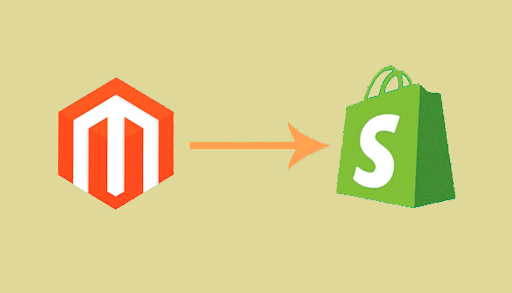Transferring Customer Data, Orders, and Products from Magento to Shopify

Migrating your online store from Magento to Shopify may seem overwhelming, but with the right steps, the process can be smooth and efficient. This guide covers everything you need to know about the migration from Magento to Shopify, including transferring customer data, orders, and products.
Why Choose Shopify Over Magento?
Before diving into the migration process, it’s important to understand why so many businesses are switching from Magento to Shopify. Shopify offers user-friendly features, robust security, and lower maintenance costs, making it an ideal platform for many online stores.
Preparing for Migration from Magento to Shopify
1. Back up Your Magento Store Data
Before you begin the migration from Magento to Shopify, it is essential to back up your Magento store. This includes customer data, orders, product information, and other essential records.
2. Analyze Data Compatibility
Ensure the format of your Magento data is compatible with Shopify. Shopify supports CSV format, so exporting your Magento data in CSV format will be necessary.
3. Choose the Right Migration Tool
To facilitate a smooth migration from Magento to Shopify, you can use various tools like LitExtension, Cart2Cart, or Shopify’s native migration tool. These tools help automate the migration process, reducing errors and downtime.
Step-by-Step Migration from Magento to Shopify
Step 1: Export Customer Data, Orders, and Products from Magento
The first step in the migration process is to export the necessary data from Magento. Here’s how:
- Customer Data: Export customer data from Magento in CSV format.
- Orders: Export order histories, including order numbers, customer details, and statuses.
- Products: Make sure to include product names, SKUs, prices, descriptions, and images.
| Data Type | Export Format | Tool for Exporting |
| Customer Data | CSV | Magento Export Tool |
| Orders | CSV | Magento Export Tool |
| Products | CSV | Magento Export Tool |
Step 2: Import Data to Shopify
After exporting your data from Magento, you can import it into Shopify using Shopify’s import feature or third-party migration tools. To do this:
- Customer Data: Import customer information to Shopify under the “Customers” tab.
- Orders: Use the order import option to add historical orders.
- Products: Upload products to Shopify with detailed information like prices, descriptions, and images.
Step 3: Verify and Test
After the import is complete, it’s crucial to verify that all data has been transferred accurately. Check for missing customer details, incomplete product information, or errors in the order history. Perform test orders to ensure everything is functioning smoothly.
Step 4: Redirect URLs
To maintain your SEO rankings, it’s important to set up 301 redirects from your old Magento URLs to the new Shopify URLs. This ensures that your customers and search engines are directed to the correct pages on your new Shopify store.
Best Practices for a Successful Migration
- Test Your Store: Run a series of test orders and customer actions to make sure everything works perfectly.
- Customer Notifications: Inform your customers about the migration and any potential downtime during the transition.
- Post-Migration Support: Consider working with Shopify experts or developers for post-migration support to address any technical issues that may arise.
Conclusion
A successful migration from Magento to Shopify can improve your store’s performance, customer experience, and overall growth. By following these steps and using the right tools, such as Shopping Cart Migration, you can transfer your customer data, orders, and products seamlessly, ensuring a smooth transition to Shopify.


